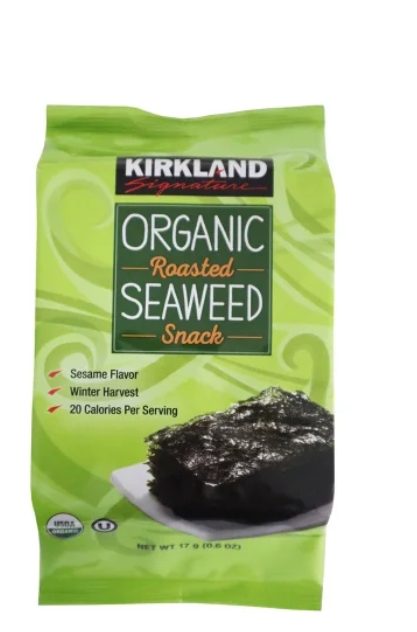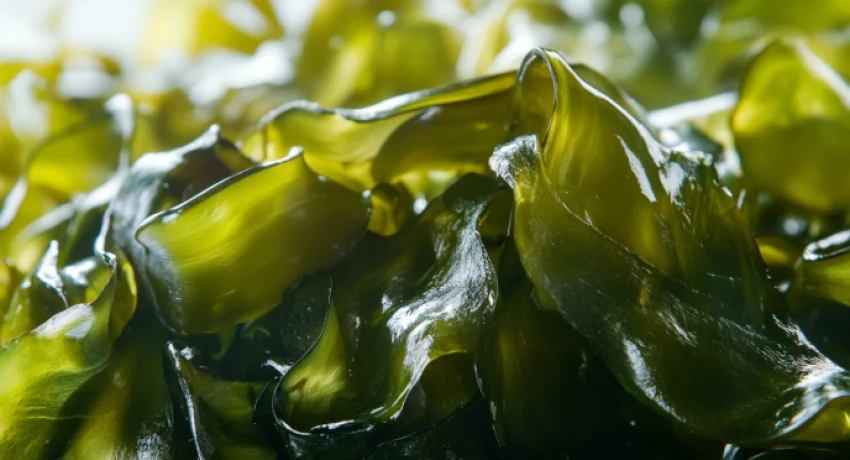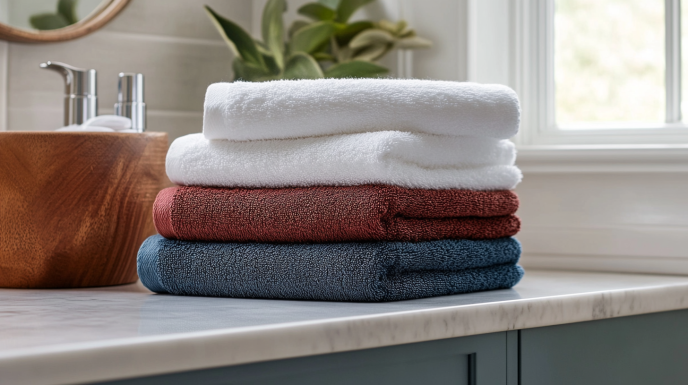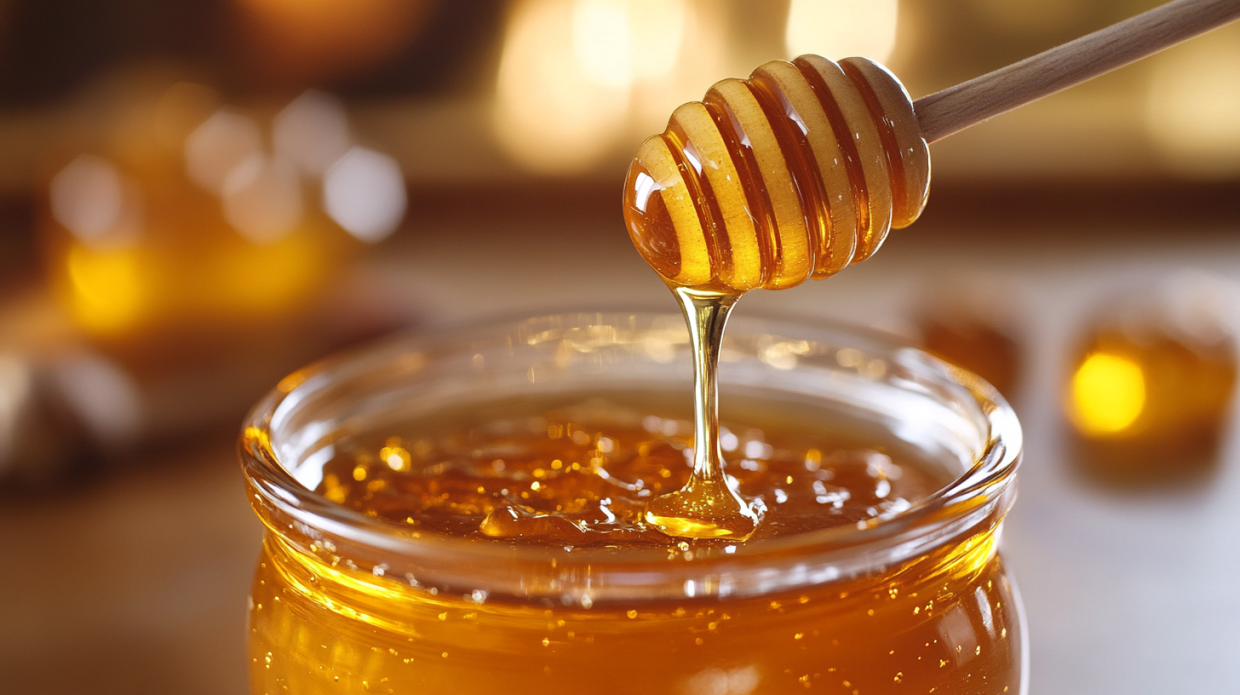
Kirkland Signature Organic Roasted Seaweed, 0.6 oz, 10-count
- USDA Organic
- Kosher (OU)
- 20 Calories per Serving
- 5 Servings per Pack
- Sesame Flavor
Discovering the Sea’s Most Delicious Secret at Your Local Costco
In the vast ocean of snack options, one particular treasure has been making waves in health-conscious households across the country. Nestled between the towering shelves of Costco’s sprawling warehouse aisles sits an unassuming green package that holds within it the crispy, umami-rich delicacy known as Kirkland Signature Organic Roasted Seaweed. As someone who has transformed from a skeptical first-time buyer to a dedicated seaweed enthusiast, I’ve navigated the salty waters of information surrounding this popular Costco staple and emerged with insights worth sharing.
Let me take you on a journey through everything you need to know about Kirkland Seaweed—nature’s perfect savory snack that delivers incredible nutrition in every bite. From its humble origins in the pristine waters of South Korea to becoming a pantry staple in homes worldwide, this blog post dives deep into what makes these thin, crispy sheets so special.
What Exactly Is Kirkland Seaweed Made Of?
The beauty of Kirkland Seaweed lies in its simplicity. These paper-thin, dark green sheets are made from nori (Pyropia species), a type of edible seaweed that has been harvested and consumed for centuries in East Asian cuisines. The production process is fascinating—nori starts its life as microscopic spores that develop into leafy marine plants in carefully maintained underwater farms.
Kirkland Signature’s seaweed snacks contain minimal ingredients, which is part of their appeal to health-conscious consumers. The primary ingredient is organic nori seaweed, which is harvested at peak maturity, cleaned, shredded, and pressed into thin sheets. These sheets are then roasted and seasoned with a light coating of organic sesame oil, sea salt, and occasionally other organic seasonings depending on the variety.
What makes Kirkland’s offering stand out from competitors is their commitment to quality and purity. The seaweed undergoes rigorous testing to ensure it’s free from contaminants and meets organic standards. Unlike some brands that load their seaweed with additives and preservatives, Kirkland maintains a clean ingredient list that lets the natural flavor of the seaweed shine through.
The Nutritional Powerhouse: Breaking Down Kirkland Seaweed’s Health Benefits
When I first encountered seaweed snacks, I was skeptical about how something so light and crispy could offer substantial nutrition. Yet, research and personal experience have shown me that these delicate sheets pack quite the nutritional punch.
A standard serving of Kirkland Seaweed (typically around 5g or about 5 sheets) contains approximately:
- Calories: 20-30 calories
- Protein: 1g
- Carbohydrates: 1g
- Fat: 2g (primarily from the sesame oil used in roasting)
- Sodium: 50-70mg (varies by flavor)
- Iodine: Significant amount (essential for thyroid function)
But the numbers don’t tell the whole story. Seaweed is one of the few plant-based sources of vitamin B12, making it valuable for those following vegetarian or vegan diets. It’s also rich in minerals like iodine, calcium, iron, magnesium, and zinc. The presence of fucoxanthin, a unique carotenoid found in brown seaweeds, has been studied for its potential anti-inflammatory and metabolic benefits.
Perhaps most impressively, seaweed contains a variety of bioactive compounds and antioxidants that may contribute to its health-promoting properties. Research suggests that regular consumption of seaweed may support thyroid health, improve gut function, and even assist with weight management due to its fiber content and metabolic effects.
For those watching their waistlines, Kirkland Seaweed makes an ideal snack. The combination of satisfying umami flavor and minimal calories means you can indulge without guilt. The fiber content helps promote satiety, potentially reducing overall caloric intake throughout the day. This makes it a smart choice for weight-conscious individuals seeking flavorful alternatives to traditional high-calorie snacks.
Where to Find This Ocean Treasure
The most straightforward answer to “Where can I buy Kirkland Seaweed?” is, of course, Costco. As a Kirkland Signature product, these seaweed snacks are a mainstay in Costco warehouses nationwide. They’re typically located in the snack aisles, often near other health-oriented options like nuts and dried fruits.
A box from Costco contains 10 packs, with each pack holding 17 grams of seaweed (approximately 17-20 sheets). This bulk packaging offers significant value compared to smaller packages available elsewhere. For regular consumers, the Costco option represents considerable savings.
For those without a Costco membership or who prefer online shopping, Kirkland Seaweed is occasionally available through Amazon and other online retailers, though often at a premium compared to in-warehouse pricing. Some grocery chains that specialize in natural and organic products may also carry Kirkland Signature products, though availability varies by location.
It’s worth noting that demand for these seaweed snacks can be high, leading to occasional stock shortages. Many dedicated fans (myself included) have been known to stock up when they see them available, which is a testament to their popularity.
Organic Status: What Makes Kirkland Seaweed Special
One question that frequently arises is whether Kirkland Seaweed is truly organic. The answer is yes—Kirkland Signature Organic Roasted Seaweed proudly bears USDA Organic certification, meaning it meets stringent standards for organic agricultural products.
To achieve this certification, the seaweed must be grown in waters that are regularly tested for pollutants and harmful substances. The farming practices must avoid synthetic pesticides and fertilizers, focusing instead on sustainable methods that maintain marine ecosystem health.
This organic designation is particularly important when it comes to seaweed products. As marine plants, seaweed naturally absorbs elements from the surrounding water. When grown in clean, carefully monitored environments, seaweed absorbs beneficial minerals. However, seaweed harvested from polluted waters can potentially contain heavy metals and other contaminants.
Kirkland’s commitment to organic sourcing provides consumers with confidence that their product undergoes rigorous testing and meets high standards for purity. This attention to quality control is part of what has built such a loyal following for their seaweed snacks.
Dietary Considerations: Gluten-Free, Vegan, and MSG
For those with dietary restrictions or preferences, Kirkland Seaweed checks many boxes:
Gluten-Free Status: Good news for those with celiac disease or gluten sensitivity—Kirkland Seaweed is naturally gluten-free. The product does not contain wheat, barley, rye, or other gluten-containing ingredients. However, those with severe gluten allergies should always check the packaging for updated information regarding manufacturing facilities.
Vegan-Friendly: Kirkland Seaweed is entirely plant-based, making it suitable for vegans and vegetarians. The minimal ingredient list typically includes only seaweed, organic sesame oil, and sea salt—all vegan-friendly components.
MSG Concerns: A common question involves the presence of monosodium glutamate (MSG). Kirkland Seaweed does not contain added MSG. The natural umami flavor comes from the glutamates naturally present in seaweed itself, not from artificial additives. This makes it an excellent choice for those who enjoy savory flavors but prefer to avoid synthetic flavor enhancers.
Sodium Content: While seaweed naturally contains some sodium, and sea salt is added during processing, the overall sodium content remains relatively moderate compared to many processed snacks. A typical serving contains approximately 50-70mg of sodium, which represents about 2-3% of the recommended daily intake. This makes Kirkland Seaweed a reasonable option even for those monitoring sodium intake, though as with any food, moderation is key.
The Origin Story: Where Kirkland Seaweed Comes From
Tracing the journey of Kirkland Seaweed from ocean to package reveals a fascinating global supply chain. The seaweed used in Kirkland products is primarily sourced from South Korea, a country with a long tradition of seaweed cultivation and consumption.
South Korean waters, particularly along the southern coastline, provide ideal conditions for growing high-quality nori. The combination of clean water, appropriate temperature ranges, and traditional farming knowledge results in seaweed with optimal flavor and nutritional profiles.
The cultivation process itself is a marvel of sustainable aquaculture. Farmers suspend nets in shallow coastal waters, where seaweed spores attach and grow. This method requires no land clearing, freshwater irrigation, fertilizers, or pesticides, making it one of the most environmentally friendly forms of food production available.
After harvesting, the seaweed undergoes careful processing in facilities that maintain strict quality control. The end product is then packaged and distributed through Costco’s efficient global supply chain, eventually making its way to warehouses across the United States and beyond.
Costco’s direct relationship with producers allows them to maintain quality standards while keeping costs reasonable—a win-win for conscious consumers seeking value without compromising on quality.
Culinary Adventures: Beyond the Snack Pack
While enjoying Kirkland Seaweed straight from the package is delightful, these versatile sheets can elevate numerous dishes. Here are some creative ways to incorporate them into your culinary repertoire:
- Rice Companion: Crumble sheets over steamed rice for an instant flavor boost. The Japanese ochazuke (tea over rice) becomes even more delicious with scattered seaweed pieces.
- Soup Enhancer: Add torn pieces to miso soup, ramen, or any broth-based dish in the last minute of cooking for umami depth.
- Salad Topper: Replace croutons with crushed seaweed for a lower-calorie, mineral-rich crunch on salads.
- Homemade Furikake: Blend crushed Kirkland Seaweed with sesame seeds, a pinch of sugar, and bonito flakes (if not vegetarian) to create a versatile Japanese seasoning for rice, eggs, and vegetables.
- Savory Oatmeal: Transform morning oats by stirring in crushed seaweed, a dash of soy sauce, and a soft-boiled egg for a satisfying savory breakfast.
- Popcorn Seasoning: Pulverize seaweed sheets in a food processor and sprinkle over freshly popped popcorn with a light mist of oil for an umami-rich snack.
- Pasta Finish: Tear sheets into ribbon-like strips and garnish pasta dishes, particularly those with cream or butter-based sauces, for a contrasting texture and flavor.
- Rice Ball Wrapping: Use whole sheets to wrap onigiri (Japanese rice balls) for an authentic touch and added flavor.
- Avocado Toast Upgrade: Layer thin strips atop avocado toast for a mineral boost and textural contrast.
- Scrambled Egg Mix-In: Add crushed seaweed to eggs before scrambling for a nutritious breakfast with depth of flavor.
For those with children, seaweed can be an acquired taste. Introducing it gradually through familiar foods can help develop appreciation for this nutritious ingredient. Try incorporating small amounts into foods they already enjoy, or create fun “sushi” rolls using seaweed wrapped around favorite fillings.
Storage Secrets: Maintaining Maximum Crispness
One challenge with Kirkland Seaweed is maintaining its ideal texture after opening. These delicate sheets quickly absorb moisture from the air, potentially becoming chewy rather than crispy. Proper storage is essential for preserving the satisfying crunch that makes them so addictive.
For optimal freshness:
- Keep unopened packages in a cool, dry place away from direct sunlight.
- Once a package is opened, transfer any uneaten sheets to an airtight container with a desiccant packet if possible.
- In humid environments, consider storing the airtight container in the refrigerator, which can help maintain crispness.
- If sheets become slightly soft, they can often be revived by a few seconds in a microwave or a brief moment over a stovetop flame (using tongs and with careful supervision).
- For long-term storage of bulk purchases, freezing unopened packages can extend shelf life without significantly impacting quality.
With proper storage, Kirkland Seaweed can maintain quality for several months, though in my household, they rarely last that long before being consumed!
Comparing Kirkland to Other Seaweed Brands
The seaweed snack market has expanded significantly in recent years, with numerous brands vying for consumer attention. How does Kirkland Signature’s offering compare to competitors?
In terms of value, Kirkland consistently outperforms most retail brands. The cost per serving is significantly lower than specialized natural food brands, sometimes at half the price or better. This value proposition becomes even more compelling when considering the organic certification.
Flavor-wise, Kirkland strikes a balance between traditional seaweed taste and accessibility for Western palates. Some specialty Korean or Japanese brands may offer more intense ocean flavors, while some mainstream brands mask the natural taste with heavier seasonings. Kirkland’s approach lets the seaweed shine while remaining approachable for newcomers.
Texture comparison reveals another strength—Kirkland sheets maintain ideal crispness without becoming overly brittle or too thick. Some competitor brands sacrifice either durability or delicacy, while Kirkland achieves a satisfying middle ground.
Package design is another consideration. Kirkland’s individual serving packs keep portions fresh until opening, though some eco-conscious consumers note the plastic packaging as a downside. A few premium competitors have moved toward more sustainable packaging solutions, an area where Kirkland could potentially improve in the future.
Overall, when considering the combination of organic certification, price point, flavor profile, and accessibility, Kirkland Seaweed represents one of the best values in the market for most consumers.
Daily Consumption: How Much Is Too Much?
As with many nutritious foods, the question arises: can you have too much of a good thing? Can Kirkland Seaweed be consumed daily?
For most healthy adults, moderate daily consumption of seaweed snacks poses no concerns and may offer health benefits. However, there are a few considerations worth noting:
Iodine Content: Seaweed is naturally rich in iodine, an essential mineral for thyroid function. While adequate iodine is necessary for health, excessive amounts can potentially affect thyroid function. For most people, a pack or two of Kirkland Seaweed daily falls within safe iodine intake levels, but those with thyroid conditions should consult healthcare providers.
Sodium Awareness: Though relatively low in sodium compared to many snacks, multiple servings throughout the day will contribute to overall sodium intake. Those on sodium-restricted diets should account for this in their daily totals.
Heavy Metal Considerations: Quality seaweed products like Kirkland’s undergo testing for contaminants, including heavy metals that can bioaccumulate in marine plants. The organic certification provides some assurance regarding purity, but extremely high consumption levels (far beyond typical snacking) might warrant additional consideration.
For children, Kirkland Seaweed can be a nutritious addition to the diet, offering minerals often lacking in typical kid-friendly foods. The thin, crispy texture makes it physically safe for children old enough to consume solid foods, though parental supervision is always recommended. Many parents report that children who develop a taste for seaweed often show increased willingness to try other nutritious foods.
The consensus among nutrition experts suggests that for most individuals, enjoying Kirkland Seaweed as a daily snack represents a healthful choice that contributes valuable nutrients while satisfying savory cravings.
Creative Snack Ideas Beyond Basic Munching
While delicious straight from the package, Kirkland Seaweed can be elevated into sophisticated snacks with minimal effort:
- Seaweed “Tacos”: Use seaweed sheets as miniature “taco shells,” filling them with rice, avocado slices, and a dash of sriracha for bite-sized flavor bombs.
- Cheese Pairing: The umami of seaweed remarkably complements aged cheeses. Try wrapping thin slices of manchego or gouda for an unexpected appetizer.
- Seaweed Butter: Pulverize sheets and blend with softened butter to create a compound spread perfect for crusty bread or finishing grilled fish.
- Rice Cracker Sandwiches: Create mini sandwiches using seaweed between thin rice crackers with a small amount of cream cheese or hummus as binding.
- Cocktail Rim: Grind seaweed with sea salt to create a savory rimming mixture for umami-forward cocktails like savory martinis or Bloody Marys.
- Trail Mix Addition: Add torn seaweed pieces to homemade trail mix with nuts, seeds, and dried berries for a mineral-rich hiking snack.
- Deviled Egg Topper: Finely chop seaweed and sprinkle over deviled eggs for a visually striking garnish with complementary flavor.
- Stuffed Mushrooms: Include crushed seaweed in mushroom stuffing mixtures for enhanced umami depth.
- Savory Yogurt Bowl: Create a savory breakfast by topping plain yogurt with crushed seaweed, cucumber, a drizzle of olive oil, and cracked pepper.
- Seaweed “Nachos”: Layer torn seaweed pieces with melted cheese, jalapenos, and small dollops of guacamole for a lower-carb nacho alternative.
These ideas transform simple seaweed sheets into conversation-worthy appetizers and snacks that can introduce skeptical friends and family to the wonders of this sea vegetable.
The Verdict: Is Kirkland Seaweed Worth the Hype?
After exploring every aspect of Kirkland Seaweed, from its origins in Korean waters to its nutritional profile and culinary versatility, I’ve reached a definitive conclusion: Kirkland Seaweed absolutely deserves its cult following among health-conscious snackers.
Few products manage to strike such a perfect balance between nutrition, flavor, convenience, and value. The organic certification addresses quality concerns, while the minimal ingredient list appeals to clean-eating advocates. The affordability makes regular consumption practical for most households, and the portable packaging suits our on-the-go lifestyles.
For newcomers to seaweed snacks, Kirkland offers an accessible entry point with a flavor profile that balances authentic seaweed taste with approachable seasoning. For experienced seaweed enthusiasts, the quality and value proposition remain compelling reasons to choose this brand.
The environmental benefits of seaweed cultivation—requiring no freshwater, fertilizers, or arable land—align with growing consumer interest in sustainable food choices. By choosing seaweed products, consumers indirectly support one of the most environmentally friendly food production systems available.
In a world of overhyped superfoods that often fail to deliver on their promises, Kirkland Seaweed stands out as the real deal—a genuinely nutritious, delicious, affordable option that seamlessly integrates into various dietary patterns and culinary traditions.
Whether you’re seeking a low-calorie snack, a mineral-rich addition to your diet, or simply a satisfying alternative to conventional chips and crackers, Kirkland Seaweed deserves a place in your pantry. The next time you’re wandering the aisles of Costco, consider adding that distinctive green box to your cart—your taste buds and your body will thank you for it.
The ocean’s bounty, transformed into a convenient snack, awaits your discovery. Happy snacking!




